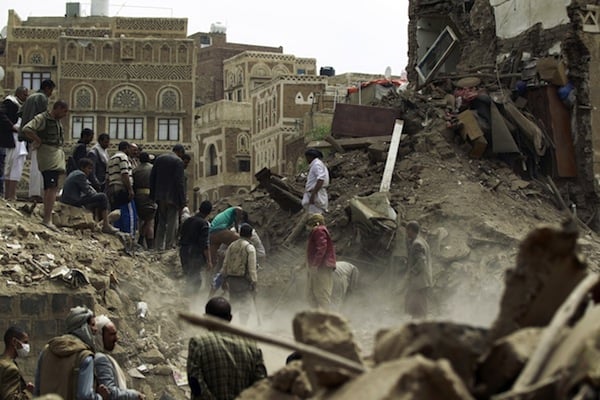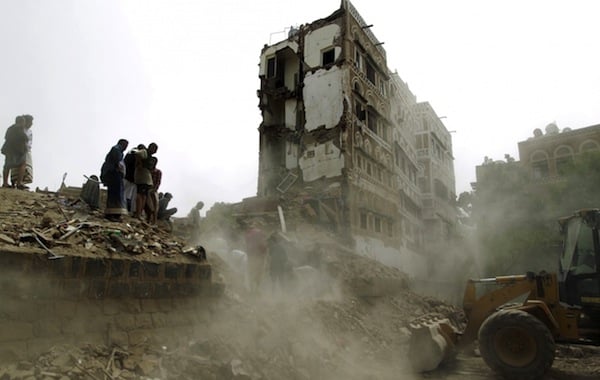Law & Politics
Airstrike in Yemen Destroys Part of UNESCO World Heritage City Sana’a

Photo: Mohammed Huwais/AFP/Getty Images

Alyssa Buffenstein

An airstrike that killed at least six people on Friday also destroyed part of the old quarter of Yemen’s 2,500-year-old capital city Sana’a, a UNESCO world heritage site.
Five houses were completely leveled and some others were damaged, the Houthi rebel-controlled news agency Saba told Reuters. Conflict throughout the middle east continues to place innocent lives and priceless cultural heritage on the front lines (see Al-Quaeda Militants Destroy Sufi Shrine in Yemen and 2014 Saw Horrific Damage to Syria’s Cultural Heritage).
The entirety of Sana’a was built before the 11th century. In the 7th and 8th centuries, it was a major city for the propagation of Islam, a history reflected in its Islamic architectural style, characterized by towering minarets and ochre and white bricks (see Islamic State Drives Archaeologists Out of Middle East).
Sana’a is home to 103 mosques, the oldest of which, the Great Mosque, is said to have been built while the prophet Mohammad was still alive. 14 hammams and over 6,000 houses are also densely packed within the city’s walls.

The side of a destroyed building and rubble left by the airstrike.
Photo: Mohammed Huwais/AFP/Getty Images
The airstrike that hit the city around 3am on Friday follows 11 weeks of airstrikes by the coalition led by exiled Yemeni president Abdrabbuh Mansour Hadi against the Houthi rebels who took over Sana’a in March. On March 26, an airstrike caused devastation near the Sana’a airport.
Brig Gen Ahmed al-Assiri, spokesperson for the Saudi coalition, said, “For sure we did not conduct any operation inside [the] city,” reports the BBC.
Previously-scheduled UN-sponsored peace talks are set to take place next week in Geneva.